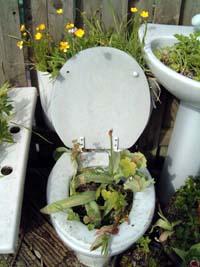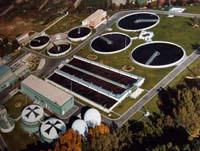Dirty water network far from being ecological

A study in Sweden calculated the amount of water that is poured when emptying the toilet tank and found that each individual poured under the toilet pit an average of eighteen thousand two hundred liters of water a year. Thousands of liters of drinking water are used to extract the physiological waste of each citizen. In view of this data, it seems to waste water, so it is, in the background”, but it is done with the best intention; in short, this system is the result of the effort of the years after cleaning and hygiene.
It has been coming for a long time. Today so common, so domestic XIX. It spread in the 19th century. Until then more environmentally friendly technologies were used to solve the problem of human waste, normally waste was used as fertilizer for which, in the hamlets, for example, the toilet hole used to directly touch the stable. This technology was not useful for cities. In fact, the toilet was a major improvement in urban hygiene.
The toilet is, of course, the first end of the chain; it needs a sanitation system that properly fulfills its function. Thus, today, towns and cities are prepared to drive waste from the toilets to the sewers, waters that are treated in treatment stations before pouring them into the river or the sea.
As already mentioned, water expenditure in the channeling of human waste is high, so experts, concerned, are developing ideas to treat these waste differently. Water reduction systems are currently common, for example, there are toilets that allow depositing more or less water. However, these experts consider that the change has to be deeper, that we have to use as little water as possible and that we have to try to take advantage of the waste.

Current wastewater must be collected and purified by pipes before being returned to the river or sea. (Photo: IQ-UVA)
Looking for solutions
The idea is to recover the idea that human waste is used as fertilizer, but the collection is there. Currently there are toilets that follow this model, specifically those that make compost. In these bathrooms, instead of transferring waste to the sanitation system, they have a large waste collection warehouse where composting is carried out. They are therefore suitable for rural dwellings or street toilets, but not for block dwellings. Therefore, they do not solve the problem of human waste in cities.
Finding a decent and adequate toilet that does not require water will cost a lot. The current system is very comfortable for the user. This, in case the bathroom and the sanitation system in question is modified, will have to modify it accordingly and, at least, will require one that does not imply discomfort. Therefore, the easiest way is to devise a cleaner toilet with a structure similar to the current one. However, it is a subject that requires deep reflection and that will not mean a change from day to day.
Published in 7K.
Buletina
Bidali zure helbide elektronikoa eta jaso asteroko buletina zure sarrera-ontzian











